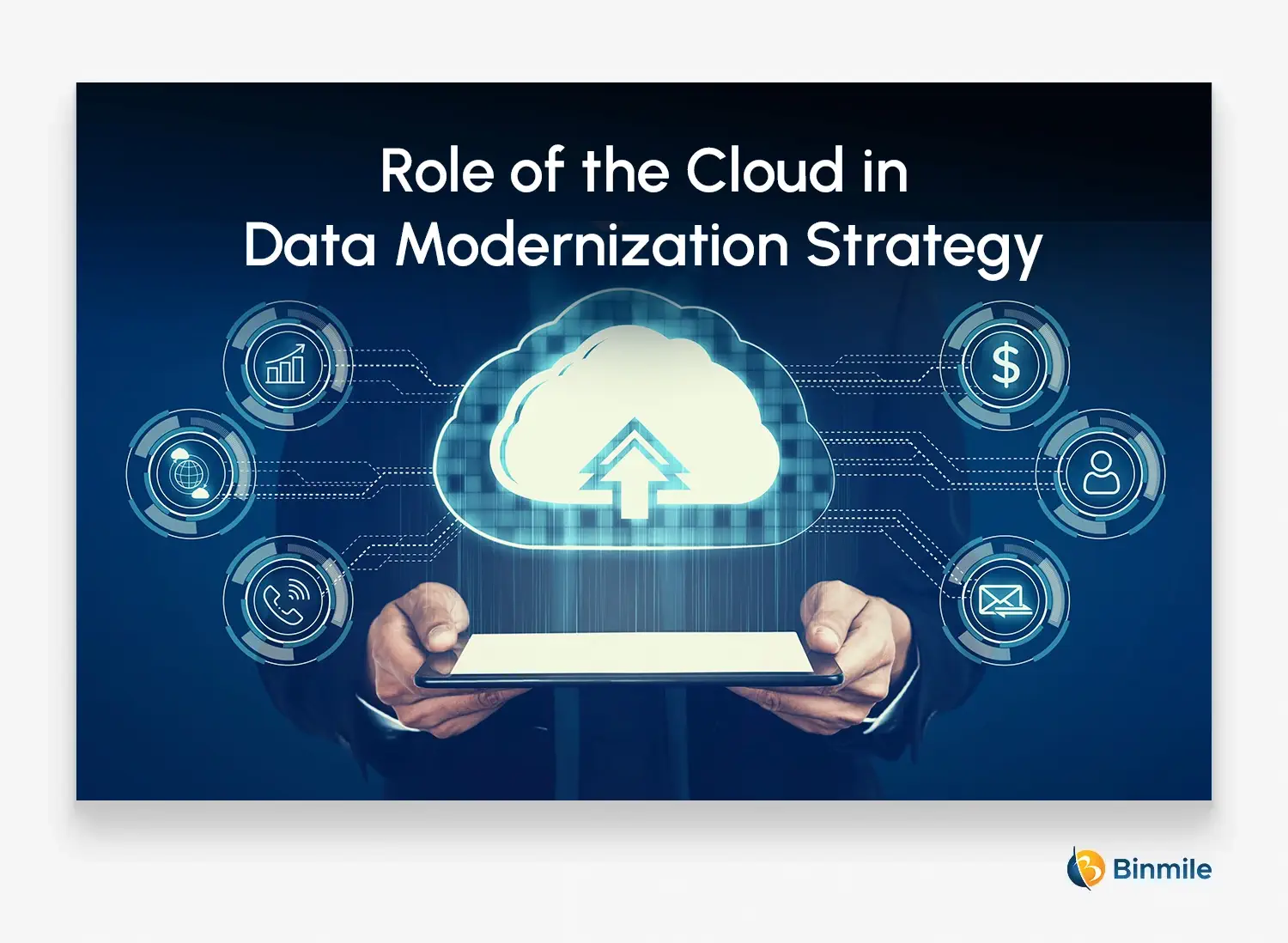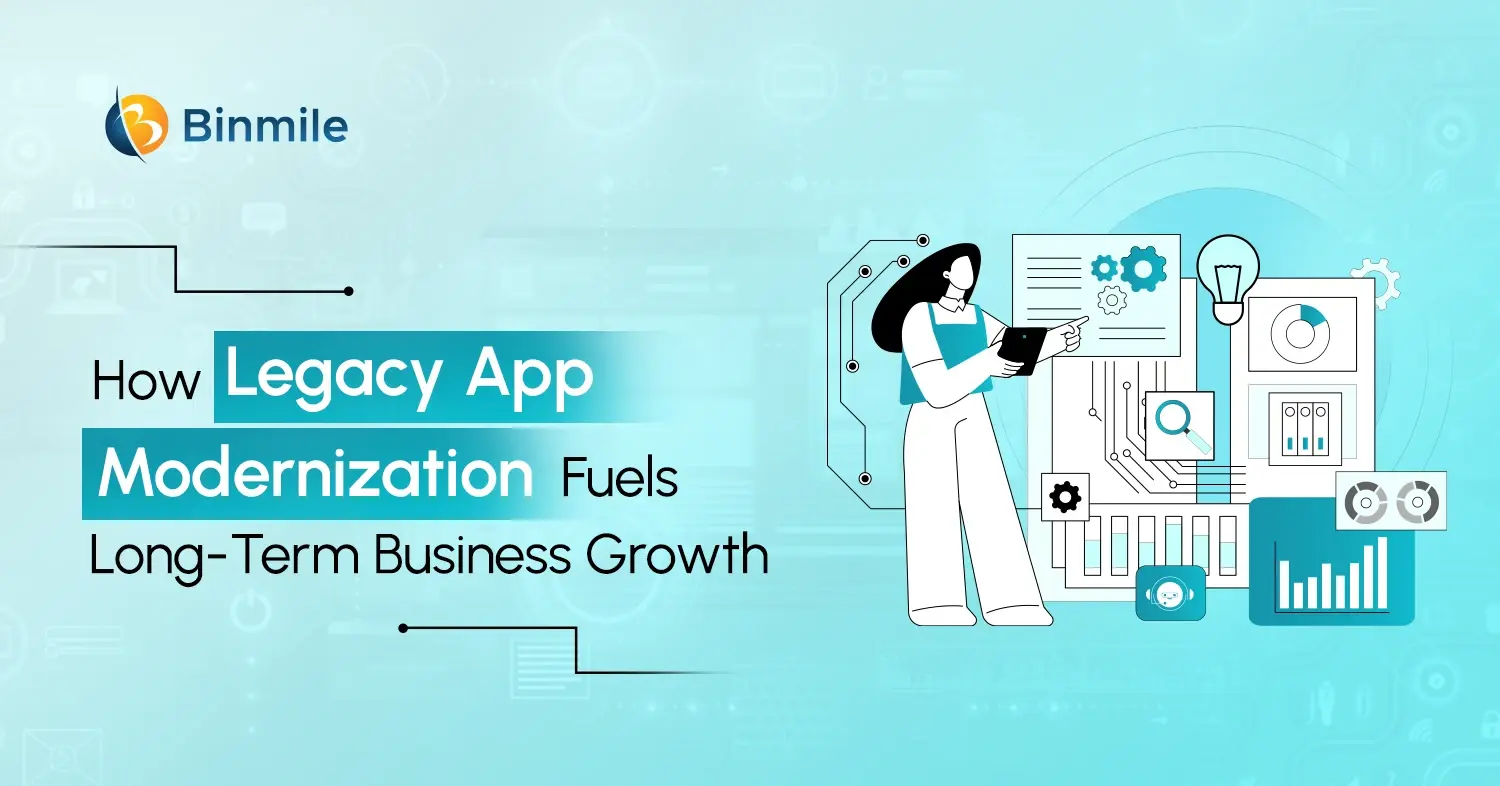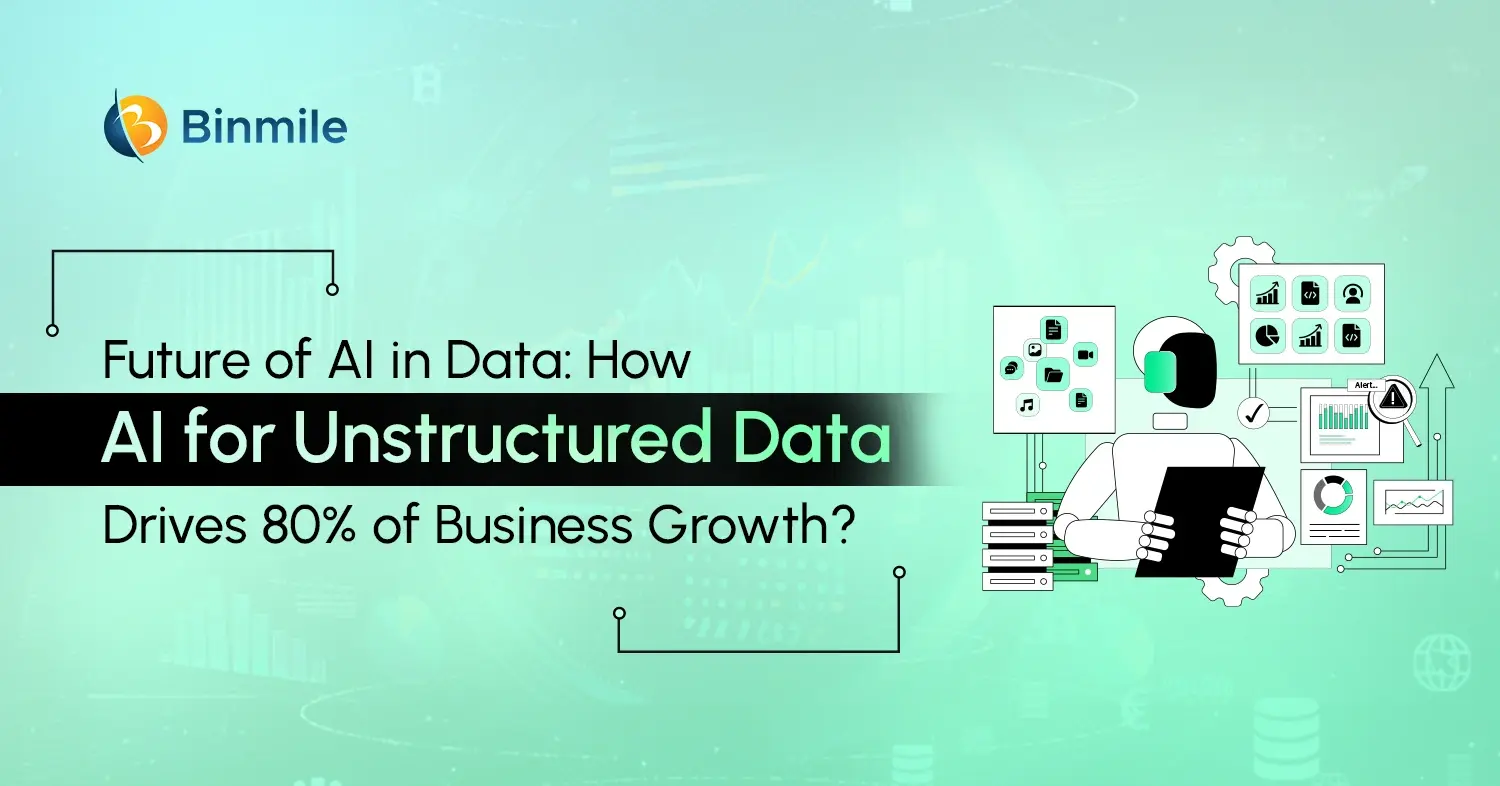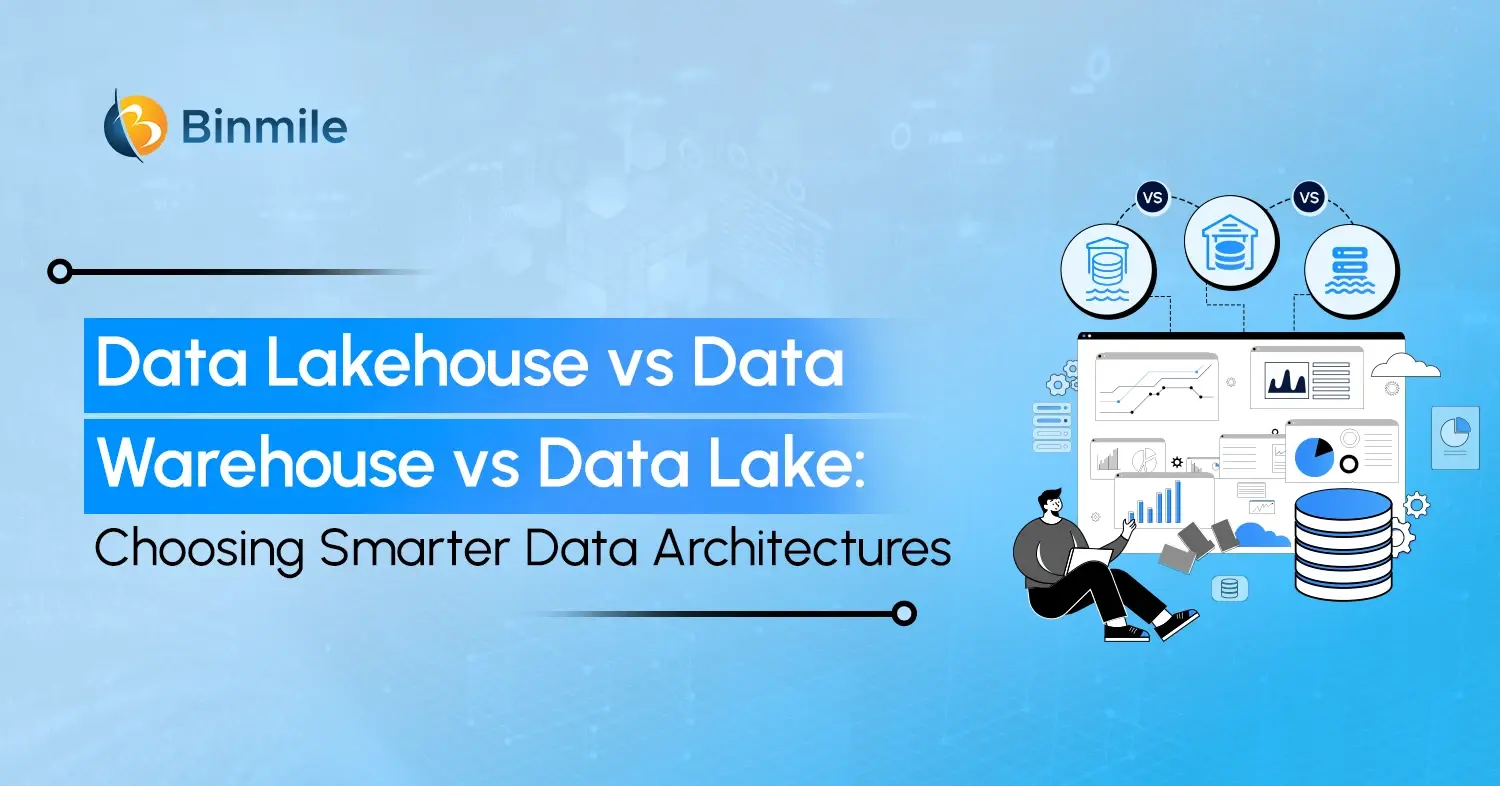The emergence of technologies such as cloud, artificial intelligence (AI), and other large language model-based (LLMs) tools have fully transformed how the banking, finance, and insurance or BFSI sectors engage with customers, grow revenue, manage risk, and comply with industry regulations. Moreover, the cadence of transaction processing has also transformed from periodic batching to real-time processing. However, going digital means dealing with data, and a lot of data. Data, if used correctly, can be used in many powerful ways, so FinTech businesses must optimize the process of turning data into information, glean insights, and generate new value from it. But that hasn’t been the case with many BFSI institutes.
Legacy application modernization need to be updated and capable of providing real-time data insights and BFSI service providers who cannot deal with the needs of modern customers with their legacy, rigid IT systems, may go out of the competition. So what’s the solution? Embrace data modernization– shifting from legacy systems to a modern data architecture. What is a data modernization strategy? It’s a clear data strategy that defines how to access, ingest, and connect essential data. In this blog, we’re going to discuss how a well-laid-out data modernization strategy can help the BFS sector overcome these hurdles and also explore the data modernization landscape to get the most out of their data.
Implementing a Data Modernization Roadmap for BFSI
Data modernization is the process of transforming and optimizing huge amounts of raw data into a more accessible, usable, and valuable form to drive meaningful insights. These insights can help any business to improve data access, scalability, and integration across an organization, which are the foundations of digital banking transformation.
It involves adopting contemporary technologies, methodologies, and strategies to address the challenges associated with outdated data management practices and systems. What are its benefits?
Key Benefits of Data Modernization:
- Improved decision-making
- Enhanced operational efficiency
- Increased agility and innovation
- Better customer experience
- Regulatory compliance
- Scalability and flexibility
7 Steps to a Successful Data Modernization Strategy for BFSI
We have seen how a successful data modernization strategy can help the BFSI sector in improving efficiency, decision-making, and customer experience. However, they face challenges in terms of legacy systems and also due to a lack of understanding of the process, an inability to allocate resources, or a lack of vision. So, let’s explore a few key steps to help you successfully implement your data modernization strategy:

1: Understanding Your Current Landscape
Bear a clear understanding of your existing data infrastructure before you start. Conduct a comprehensive assessment to analyze your processes, systems, and technologies. Identify roadblocks like legacy systems, data silos, or outdated tools that are hindering your ability to effectively manage data.
2: Setting Strategic Objectives
Data modernization should be driven by clearly defined goals. Ask questions like do you seek to improve the accessibility of your data for better informed decision-making? Or you want to focus on enhancing data security or enabling real-time analytics. This helps you in establishing your objective which enables you to stay on track in your modernization efforts.
3: Building a Secure Foundation
Digital transformation in Businesses must have a robust data governance framework as that’s the cornerstone of a successful data modernization project. Frameworks ensure the quality, compliance, and security of your data throughout the organization. To improve data quality in AI, work on setting up well-defined roles and responsibilities for data management. Additionally, put in place clear policies governing data access, usage, and protection. Doing so helps you implement data quality standards and ensure data accuracy and consistency.
4: Data Security & Governance
The sensitivity of data along with the dispersed nature of data sources demands that businesses develop a robust security and governance structure. Businesses must make data security and governance a foundational and non-negotiable element of the data strategy. Data security entails establishing policies, procedures, and controls to ensure that information is used appropriately and risks are mitigated. Data governance is about managing and organizing data effectively. Both ensure data is suitable to be used, reliable, and secured.
5: Unifying Your Data Ecosystem
Data modernization thrives on a unified data landscape. Execute a well-planned data migration and integration process to consolidate disparate data sources and break down existing silos. Leverage data integration solutions to create seamless connectivity between your various systems and databases.
6: Unlocking the Power of Data
Leverage advanced analytics and artificial intelligence to unlock actionable insights from your data. Explore techniques like predictive analytics, machine learning models, and natural language processing to uncover hidden trends and opportunities within your data. These insights will empower you to make data-driven decisions that drive business growth.
7: Ongoing Process & Maintenance
Once your data modernization strategy is in place, you need to keep monitoring its impact and performance. Therefore, establish mechanisms for continuous monitoring, measurement, and optimization. Regularly assess performance metrics, user feedback, and industry best practices to identify areas for improvement. This iterative approach ensures that your data strategy remains effective and responsive to changing business needs.
Transform your data strategy—consult our experts for seamless data modernization tailored to BFSI needs. Start your journey today!
Role of the Cloud in Data Modernization Strategy
Your data modernization is incomplete and not that effective if you miss out on cloud-based data modernization. It allows businesses to break free from the limitations of on-premises data systems and take advantage of the cloud’s agility, speed, and cost-effectiveness. Cloud in data modernization offers more benefits, which include:

- Cost Optimization: Cloud solutions offer a “pay-as-you-go” pricing model, which means users pay based on their resource usage.
- Scalability and Flexibility: It boosts growth by allowing organizations to add or remove compute resources as needed.
- Advanced Analytics: Offers access to various analytics tools and machine learning services, enabling organizations to derive deeper insights from their data.
Also Read: Lift and Shift Cloud Migration Strategy
Wrapping Up
As banks expand their operating models and adopt digital transformation across their operations, they need to enhance their abilities to extract meaningful information from raw data in real-time Thus, they need to modernize their data infrastructure for optimal collaboration, innovation, and enhanced customer experience. However, for a strong foundation for data modernization strategy, BFSI must understand best practices, and the significance of leveraging accurate, timely, and comprehensive information by improving their data management and business intelligence initiatives.
In this blog, we discussed what is data modernization and its benefits for business, finance, and insurance services providers. Additionally, we also shared the best practices for effectively implementing data modernization strategies. Hopefully, you can now analyze and interpret data effectively, gain valuable insights, identify emerging trends, and make informed choices that drive business growth and success.









